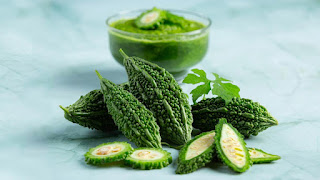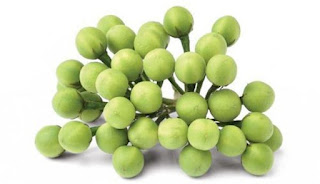Health benefits of Bitter Gourd:It looks like you're referring to bitter gourd (also called bitter melon). It's a tropical vine known for its edible fruit, which is very bitter in taste. Here’s a quick overview:
Scientific Name:
Momordica charantia
Common Names:
Bitter gourd
Bitter melon
Kerala (in Hindi)
Ampalaya (in Filipino)
Health Benefits:
Helps regulate blood sugar levels
Rich in vitamin C and antioxidants
Aids in digestion
May support weight loss
How It's Used:
In stir-fries, curries, soups, or as juice
Often soaked in salt water to reduce bitterness before cooking
Bitter gourd (bitter melon) is widely grown in tropical and subtropical regions. Here are the main countries where bitter gourd is cultivated:
Top Bitter Gourd Growing Countries:
1. India – One of the largest producers and consumers; grown widely across states like Maharashtra, Uttar Pradesh, and Kerala.
2. China – Major grower and exporter; widely used in traditional Chinese cuisine and medicine.
3. Philippines – Locally known as ampalaya, it's a common vegetable and also part of diabetes management.
4. Thailand – Used in traditional dishes and herbal medicine.
5. Vietnam – Known as mướp đắng, often stuffed and used in soups.
6. Pakistan – Common in local cuisine and medicine.
7. Bangladesh – Cultivated widely and used in traditional cooking.
8. Indonesia – Used in various traditional dishes.
9. Sri Lanka – Known as karawila, used in sambols and curries.
10. Malaysia – Grown in home gardens and farms, used in stir-fry dishes.
Also Grown In:
Tropical Africa
Caribbean nations
South America (Brazil)
United States (especially Florida, Texas, and Hawaii by Asian immigrant communities). Bitter guard cooking methods:
Bitter gourd (bitter melon) can be cooked in several delicious ways, even with its naturally bitter taste. Here are popular cooking methods used around the world:
1. Stir-Frying
How: Slice thinly (remove seeds), optionally salt and rinse to reduce bitterness. Stir-fry with garlic, onions, or proteins like eggs, tofu, or meat.
Popular In: India, China, Philippines
2. Stuffed Bitter Gourd
How: Slit open, remove seeds, stuff with spiced lentils or meat mixture, and cook by pan-frying or steaming.
Popular In: India (Bharwa Karela), Pakistan, Bangladesh
3. Curry or Gravy
How: Cooked in tomato-onion or coconut-based gravies with Indian spices.
Popular In: India and Sri Lanka (Karawila curry).
4. Bitter Gourd Chips / Fries
How: Thinly slice, marinate with salt/spices, deep fry or air-fry.
Popular In: South India (crispy snacks or side dish)
5. Bitter Gourd Juice
How: Blend with water and strain. Often consumed raw for health benefits (especially for diabetes).
Tip: Mix with apple or cucumber juice to reduce bitterness.
6. Soup
How: Add sliced bitter melon to clear broths with pork, chicken, or tofu.
Popular In: China, Vietnam, Philippines (ampalaya soup)
7. Pickled Bitter Gourd
How: Sliced and soaked in vinegar, salt, and spices to create a tangy pickle.
Popular In: India and Southeast Asia. Nutritional benefits of Bitter Gourd:Bitter gourd (bitter melon or karela) is packed with nutrients and is widely used in traditional medicine. Here are the key health benefits:
1. Helps Regulate Blood Sugar
Contains charantin and polypeptide-p, which help lower blood glucose.
Supports insulin function—beneficial for type 2 diabetes.
2. Boosts Immunity
Rich in vitamin C, a powerful antioxidant that helps fight infections and boosts immune function.
3. Aids Digestion
Contains dietary fiber that promotes gut health and regular bowel movements.
Stimulates digestive enzymes.
4. Supports Weight Loss
Low in calories, high in fiber—helps you feel full longer.
May boost metabolism and fat oxidation.
5. Detoxifies the Liver
Bitter compounds support liver function and help in flushing out toxins.
6. Improves Skin Health
Antioxidants and antibacterial properties help combat acne, eczema, and other skin conditions.
Sometimes used in natural remedies for glowing skin.
7. Good for Heart Health
May help reduce bad cholesterol (LDL) and maintain blood pressure levels.
8. Anti-Cancer Properties (Emerging Research)
Some studies suggest bitter gourd may inhibit the growth of certain cancer cells due to its phytonutrients and antioxidants.
9. May Help in Respiratory Conditions
Traditionally used to relieve asthma, bronchitis, and cough.
Note:
Bitter gourd is very potent, so consume in moderation—especially if you're on blood sugar-lowering medications.
"This Content Sponsored by Buymote Shopping app
BuyMote E-Shopping Application is One of the Online Shopping App
Now Available on Play Store & App Store (Buymote E-Shopping)
Click Below Link and Install Application: https://buymote.shop/links/0f5993744a9213079a6b53e8
Sponsor Content: #buymote #buymoteeshopping #buymoteonline #buymoteshopping #buymoteapplication"














































